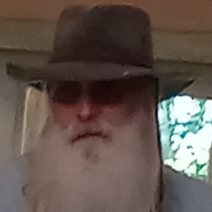-
Posts
8,823 -
Joined
-
Last visited
Story Reviews
- Rank: #0
- Total: 3
Comments
- Rank: #0
- Total: 183
About JamesSavik

Favorite Genres
-
Favorite Genres
Sci-Fi
Profile Information
-
Topic Display Title
Member Title
-
My Words
Cat Bastard
-
Location
Darkest Ignoramia
-
Interests
astronomy, physics, math, programming, E-bay, red heads, my truck
Contact Methods
-
Public Email
jamessavik@gmail.com
- Website URL
Recent Profile Visitors
JamesSavik's Achievements
-
sulfur - Word of the Day - Tue Nov 26, 2024
JamesSavik commented on Myr's blog entry in Writing World
I doubt it. We all know you are too smart to drink sulfuric acid. Sulfur is often associated with the underworld. Sulfur is the brimstone in preacher's fire and brimstone sermons warning of hell. It reeks to high heaven of rotten eggs in its most common compounds which are emitted by the metric tons during volcanic eruptions. Depending on the composition of the magma, an eruption often emits more gas than lava. Most of this is in the form of SO4 and H2S2. A key indicator that a dormant volcano is about to wake up is SO4 emissions. The Taal volcano in the Philippines erupting in 2020. This highly active volcano constantly emits SO4. A surge in these emissions is a sure indicator it is up to shenanigans. -
phosphorus - Word of the Day - Mon Nov 25, 2024
JamesSavik commented on Myr's blog entry in Writing World
Willie Pete is really neat, Just drop it on the tangos. It won't take long till they're all gone, Leaving nothing but ashes and bone. Remember kids: it's not a war crime the first time. -
silicon - Word of the Day - Sun Nov 24, 2024
JamesSavik commented on Myr's blog entry in Writing World
Semiconductors depend on a doping agent in silicon to act reliably in circuits. The doping agent and silicon create a lattice structure with an extra electron (n-type), or a hole for an electron (p-type). The diode, the first semiconductor device, will only allow current to flow in one direction. Discovered by Russell Ohl at Bell Labs in 1939, the diode was just the first semiconductor device. It was soon followed by transistors and their numerous variations. -
aluminum - Word of the Day - Sat Nov 23, 2024
JamesSavik commented on Myr's blog entry in Writing World
Aluminum is another element that does not exist on earth in a pure elemental form. It comes from a mineral called Bauxite. Aluminum is processed from Bauxite into an industrially useful form by an energy intensive two-stage process. Discovered by Hans Christian Orstead in 1825, it was another sixty years before it became available in industrial quantities. -
magnesium - Word of the Day - Fri Nov 22, 2024
JamesSavik commented on Myr's blog entry in Writing World
Magnesium Is a low density light metal that is often used in alloys where strength and light-weight are necessary. It has broad applications in the aerospace, automotive, and electronics industry. A persistent mystery regarding magnesium is why does it appear in nodules on the deep ocean floor? Magnesium Nodules -
sodium - Word of the Day - Thu Nov 21, 2024
JamesSavik commented on Myr's blog entry in Writing World
Sodium in its mushy metal phase is usually stored in an oily liquid to keep it from reacting to air. -
fluorine - Word of the Day - Tue Nov 19, 2024
JamesSavik commented on Myr's blog entry in Writing World
Not one of my favorite elements. Fluorine is nasty and not easily handled. It is very corrosive and quite reactive. Compounds of Fluorine were experimented with as explosives, but they proved to be too unstable for military or commercial applications and were hard on chemical labs and researchers. It was one of the first poison gases Germany experimented with in WWI. It was not very effective because it was too light and dissipated too quickly. They quickly moved on to Chlorine, Phosphine, and eventually Mustard Gas. -
oxygen - Word of the Day - Mon Nov 18, 2024
JamesSavik commented on Myr's blog entry in Writing World
Oxygen is so reactive, chemists have given the process a special name: oxidation. Earth is a terrible place for a laboratory to understand the universe. The majority of the universe exists as a vacuum without gravity nor does it possess an oxidizing atmosphere. We humans are only now beginning to grasp how ignorant we actually are. -
Y'all can't make this without tasting New Orleans.
-
nitrogen - Word of the Day - Sun Nov 17, 2024
JamesSavik commented on Myr's blog entry in Writing World
Nitrogen is the Mr. Hyde of the chemical world. In its most familiar form, it is diatomic (or N-N). In this configuration, all of its electrons are occupied and it is remarkably non-reactive. In Nitrogen's Dr. Jekyll form of nitrides, nitrites, and nitrates, it is part of some of the most powerful explosives known: TNT, Nitroglycerin, Cordite, Torpex, C4, Simtex, Octal, and others. Nitrogen is also a key ingredient in fertilizers. What makes non-reactive diatomic Nitrogen morph into high explosives and fertilizers? It's a process called Nitrogen fixation where its diatomic configuration is broken and placed into a new compound. This process occurs either organically in plants, animals and microbes or facilitated by industrial chemical reactions. The ions of Nitrogen are chemically nothing at all like diatomic Nitrogen. In the immortal word of Corbin Dallas in the Fifth Element: "Big bada BOOM." -
carbon - Word of the Day - Sat Nov 16, 2024
JamesSavik commented on Myr's blog entry in Writing World
Strictly speaking, almost anything can be "organic" as long as it contains carbon, oxygen, hydrogen and nitrogen. The whole of organic chemistry is these four atoms arranged in different numbers and structures. -
Big Enough to Eat Back in the 1920s, my grandmother had a super-mouser she named Champion. He was a huge yellow tabby little kids feared because at twenty-two pounds, he was bigger than some wildcats. He was the undisputed King of the cats in that part of Holmes County. Unless you were a mouse, rat or were messing with him, Champion was remarkably good-natured and would leave my grandmother two or three mice a day on her kitchen step. At that time, cats were considered working animals. Their job was pest control and Champion was the best in the business. His kittens were highly sought after. When word got out that he had sired kittens, my grandmother had plenty of requests. One lady asked when she could get her future mouse eradicator, my grandmother replied, "Oh, just as soon as they are big enough to eat."
-
boron - Word of the Day - Fri Nov 15, 2024
JamesSavik commented on Myr's blog entry in Writing World
Boron is a good illustration of why it took so long for many elements to be identified. It never appears in its elemental form in a terrestrial environment but as part of a naturally occurring mineral (Colemanite, Rasorite, Tincal & Ulexite account for 90% of Boron's abundance on earth). Elemental Boron is found in small amounts in meteors, but never in pure deposits on earth. -
When I was little, I was a touch dyslexic, which was troublesome but good for a few laughs. My older brother was considerably older than me. The family occasionally packed everything up, and we went to see a football game on campus in Starkville (Mississippi State University). Once, my brother was showing me around campus there was a building that made me stop in my tracks. The sign on the building read, Department of Fine Arts. That's not what my treacherous brain read. I asked my brother, "What does the Department of Fine Rats do?" https://i.postimg.cc/L6v0CYQZ/fine-rat.jpg
-
beryllium - Word of the Day - Thu Nov 14, 2024
JamesSavik commented on Myr's blog entry in Writing World
Eighty-seven percent of the world's supply of beryllium is mined in Utah. It's an important additive in alloys of copper and steel, used in reactors and nuclear weapons, X-ray tubes and the magnetrons of microwave ovens. It is a listed carcinogen, so use appropriate measures when handling or working with beryllium. Fun story: As a young nerd, I built a collection of element samples. I had small amounts of various elements in glass vials. Some idiot told the Resident Ass...sistant in the dorm I had dangerous, possible bomb making chemicals in my dorm room. On the way back from my networks class, I was tackled and arrested by a couple of deputy sheriffs. After viewing what I had, one of the chemistry professors told the cops that what I had was harmless and stored appropriately. No bombs or nefarious things could be done with the small samples I had. It was a false alarm and no terrorist bombs could be made with it. They were still a little freaked out by the uranium ore and thorianite being slightly radioactive. Thankfully, they let the bong slide. What's a few alpha particles among friends?








































